#wheel of the year
Text
Every Pagan Holiday
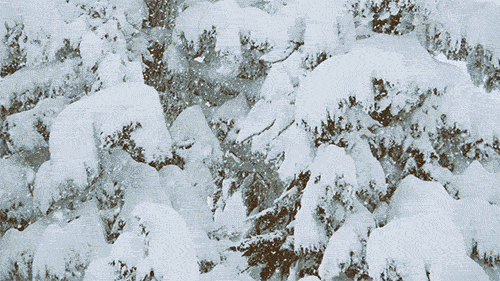
JANUARY
KALENDS
1st January
Origins: Ancient Greece/Rome
Observed by: Hellenic/Roman polytheists
Honouring Janus/Juno, first day of the Year. Kalends brought us the word 'calendar'.
ÞORRABLÓT (THORRABLÓT)
End of January/beginning of February
Origins: Iceland
Observed by: Heathens, Asatru
Midwinter Festival honouring Thor, usually by feasting and poetry.

FEBRUARY
IMBOLC
2nd February
Origins: Celtic polytheism /Ireland, as St. Brigid's Day
Observed by: Most neopagans, Wiccans, Druids, Asatru (as Charming of the Plow)
Imbolc is the most widely known and observed pagan holiday in the months of January and February. It falls at the beginning of spring/end of the winter for the Celtic peoples; marking the changing of the seasons, as most holidays do. St. Brigid is a Christianised form of or inspired by the Celtic fertility goddess Brigid who is celebrated on this day.
PARENTALIA
13th-21st February
Origins: Ancient Rome
Observed by: Greco-Roman polytheists
Translating to 'Ancestors Day', Parentalia is a nine-day celebration of deceased ancestors. Historically it was observed by feasting and making offerings and sacrifices to the dead and spirits of the underworld.
VÁLI'S BLOT
14th February
Origins: Old Norse
Observed by: Heathens, Asatru, Norse polytheists
Váli's Blot is considered by some Asatru to be the Norse equivalent of Valentine's Day but is widely acknowledged as a season changing festival. A day for marriage and celebrating with family and friends, and for remembrance of Váli, the son of Odin who defeated Höðr on this day.
LUPERCALIA
15th February
Origins: Ancient Rome
Observed by: Greco-Roman polytheists
Festival thought to honour a wolf who raised abandoned princes, celebrated originally by sacrificing goats to the gods, feasting, and, for fertility, nudity and fornication.
LESSER ELEUSINIAN MYSTERIES
17th-23rd February
Origins: Ancient Greece
Observed by: Hellenic polytheists
Initiation to the cult of Persephone and Demeter by sacrificing a pig. Prelude to Greater Mysteries, initiations held on these dates. Once completed, initiates could then move onto Greater Mysteries in the autumn.
ANTHESTERIA
27th February - 1st March 2021
Origins: Ancient Greece
Observed by: Hellenic polytheists
Athenian festivals dedicated to Dionysus and the dead. Held around the full moon in the month of Anthesterion, which in the Gregorian calendar this year roughly translates to 27th February.
THE DISTING/DÍSABLÓT
End of February/beginning of March
Origins: Uppsala, Sweden
Observed by: Heathens, Asatru, Norse polytheists
Celebration of Valkyries and other female spirits, called dísir. Sacrifices were made for a good harvest. Celebrated still by an annual market in Sweden.

MARCH
KALENDS
1st March
Origins: Ancient Greece/Rome
Observed by: Hellenic/Roman polytheists
Honouring the god Mars/Ares. Kalends brought us the word 'calendar'.
OSTARA/EARRACH
20th March
Origins: Anglo Saxon paganism, popularised as Ostara by Wicca
Observed by: Anglo Saxon Pagans, Wiccans, Neopagans, Druids (as Alba Eilir), Heathens (as Summer Finding), Ásatrú (as Sigrblót)
The northern hemisphere's vernal equinox, the word Ostara was introduced though Wicca and named for the goddess Eostre. Surprisingly unrelated to Easter in all but name, Ostara symbolises the beginning of spring. As a seasonal holiday it is widely celebrated by many different groups of pagans.
RAGNAR LODBROK'S DAY
28th March
Origins: Icelandic Sagas
Observed by: Ásatrú
Day of remembrance for Ragnar Lodbrok, Viking King of legend

APRIL
KALENDS/VENERALIA
1st April
Origins: Ancient Greece/Rome
Observed by: Hellenic/Roman polytheists
Celebration of the first of the month, this one honouring the goddess, Venus.
REMEMBRANCE FOR HAAKON SIGURDSSON
9th April
Origins: Norway, C9th
Observed by: Ásatrú
Day of remembrance for ruler of Norway who claimed lineage to Odin in the Icelandic Sagas.
WALPURGISNACHT
30th April
Origins: German Christianity, originally Saint Walpurga was known for banishing witches and other pests
Observed by: LaVeyan Satanists
Anton LaVey chose to celebrate this holiday as a follow up to the spring equinox and due to its past association with witchcraft.
HEXENNACHT (WITCHES' NIGHT)
30th April
Origins: German folklore, as Walpurgisnacht but witches were alleged to convene with the devil in this night
Observed by: Temple of Satan as 'a solemn holiday to honour those who were victimized by superstition'.

MAY
BEALTAINE/BELTANE
1st May
Origins: Celtic (Ireland/Scotland/Isle of Man)
Observed by: Wiccans, Neopagans, Celtic reconstructionist, Ásatrú/Heathens (as May Day)
One of the more well-known pagan festivals, Beltane is a festival of fire and the beginning of the summer. Also widely referred to as May Day, it is celebrated by lighting fires.
KALENDS
1st May
Origins: Ancient Greece/Rome
Observed by: Hellenic/Roman polytheists
Honouring the goddess Maia, for whom the month may have been named.
REMEMBRANCE FOR Guðröðr of Guðbrandsdál
9th May
Origins: C11 Norway, Icelandic Sagas
Observed by: Ásatrú, Norse, heathens
Guðröðr had his tongue removed by Óláfr for rebelling against violent conversion from Norse paganism to Christianity.
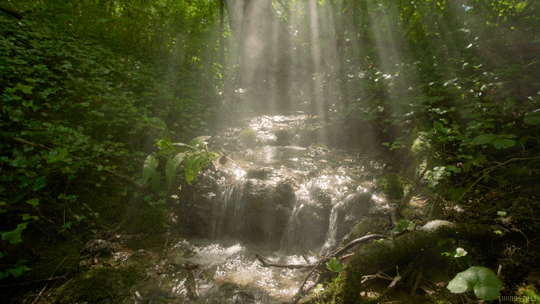
JUNE
KALENDS
1st June
Origins: Ancient Greece/Rome
Observed by: Hellenic/Roman polytheists
Anniversary of temples to Juno Moneta (protectress of money, her temple was where coins were made), Mars/Ares (God of war), and the Tempestates (goddesses of storms).
ARRHEPHORIA
3rd Skirophorion (translates to mid-June)
Origins: Ancient Greece
Observed by: Hellenic reconstructionist
Feast in celebration of Athena and fertility.
MIDSUMMER/SUMMER SOLSTICE
21st June
Origins: Agricultural holiday/longest day observed for centuries by many civilisations. Christianity can date to as early as C4th
Observed by: Wiccans/Germanic neopagans (as Litha), Asatru/Heathens, Druids (as Alban Hefin)
One of the main four holidays in the Wheel of the Year and popularised by Wiccans and neopagans as Litha which is taken from the Anglo-Saxon words for June/July, this is the longest day of the year and the middle point and sometimes considered the beginning of summer.

JULY
REMEMBRANCE FOR UNNR/AUD THE DEEP MINDED
9th July
Origins: C9th Iceland
Observed by: Ásatrú, Heathens, Norse reconstructionist
Aud was a traveller in the 9th century moving between Dublin, the Hebrides, Orkney, and finally Iceland following the deaths of her husband and son. This day is to honour her memory.
HERACLEIA
July/August
Origins: Ancient Greece
Observed by: Hellenic polytheists
Festival dedicated to Heracles the demigod and his death, involving feasting and celebration.

AUGUST
LUGHNASADH/LAMMAS
1st August
Origins: Celtic Britain (Ireland, Scotland, Isle of Man)
Observed by: Wiccans, Neopagans, Christians (as Lammas), Ásatrú (as Freyfaxi)
Named for the god Lugh, this festival is one of the Celtic harvest festivals and marks the beginning of the harvesting months. It was celebrated by climbing mountains, bull sacrifice, offerings, and feasting. Handfasting is commonplace with Wiccans in modern times.
REMEMBRANCE FOR REDBAD, KING OF THE FRISIANS
9th August
Origins: C7th Frisia (area of Germany/Netherlands)
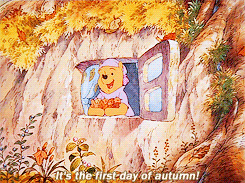
SEPTEMBER
NOUMENIA
8th September
Origins: Ancient Greece
Observed by: Hellenic polytheists
Celebration of new Hellenic lunar month. Offerings of honey and incense made to household deities.
REMEMBRANCE FOR HERMANN THE CHERUSCAN
9th September
Origins: C9th CE
Observed by: Heathens, Ásatrú
Hermann the Cheruscan, also known as Arminius of the Cherusci tribe, led the defeat against the Romans at the Battle of Teutoburg Forest and is lauded for saving Eastern Germanic peoples from being conquered by the Roman Empire.
AUTUMN EQUINOX (NORTHERN HEMISPHERE)
22nd September
Origins: 1970s neopaganism
Observed by: Wiccans and Neopagans (as Mabon), Ásatrú (as Winter Finding)
Named Mabon by prominent Wicca and Neopagan Aidan Kelly, after the Welsh mythological figure Mabon ap Moldron, the autumn equinox is one of the harvest festivals and marks the beginning of autumn in the northern hemisphere. Mabon is a relatively new pagan holiday not based on any specific historical festival, but traditionally people around the world would celebrate some kind of harvest festival around the end of September/beginning of October.
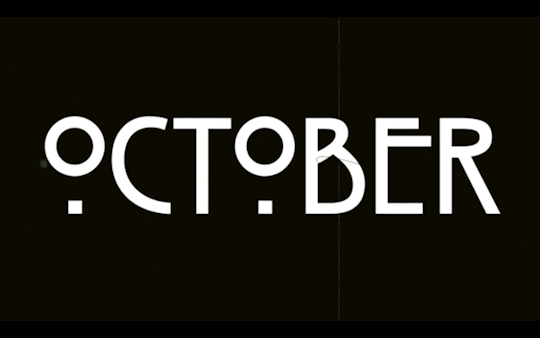
OCTOBER
PYANOPSIA
7th October
Origins: Ancient Greece
Observed by: Hellenic polytheists
Pyanopsia, or Pyanepsia, is a festival to honour Apollo, one of the most important deities, God of music, the sun, knowledge, healing, and archery - amongst other things. During the festival, two special offerings would be placed on doorways and carried to the temple. These offerings were a bean stew, and an olive branch wrapped in wool with honeys, pastries and seasonal fruits hanging from it.
REMEMBRANCE FOR LEIF EIRIKSSON
9th October
Origins: C10th CE
Observed by: Heathens, Ásatrú, Norse pagans
Remembrance for Leif and his sister Freydís Eiríksdóttir, children of Erik the Red, who are cited with being the first Norse explorers in North America.
THESMOPHORIA
12th-14th October
Origins: Ancient Greece
Observed by: Hellenic polytheists
Festival held in honour of Demeter Thesmophoros, goddess of agriculture, and her daughter Persephone, goddess of death and life, Queen of the Underworld. Celebrated primarily by women, this festival is linked with fertility, and we know very little about it due to its secretive rites. It is thought that it involved the sacrifice of pigs (although some sources say women), and abstinence.
REMEMBRANCE FOR ERIK THE RED
28th October
Origins: C9th CE
Observed by: Heathens, Ásatrú, Norse pagans
Erik the Red, probably named for the colour of his hair and beard, was the first permanent European settler in Greenland. His children were explorers too, who went to America, and although his wife converted to Christianity, Erik remained faithful to his Norse pagan gods.
SAMHAIN (HALLOWE'EN)
31st October-1st November
Origins: Gaelic - Scotland, Ireland, Isle of Man
Observed by: Celtic pagans, Neopagans, Wiccans
Pronounced SOW-in (sow rhyming with cow), Samhain was originally a harvest festival marking the beginning of winter. The day itself is the 1st November, but celebrations begin on October 31st, and this has become the accepted associated day. It's a festival of the dead, where the síthe, fae and spirits, can enter this realm from their own. Wiccans talk of a 'veil' thinning, meaning the boundary between worlds. Similar death related festivals around this time can be noted in other faiths from across the globe, and of course in the modern Hallowe'en.
WINTER NIGHTS (VETRNAETR), ÁLFABLÓT/DÍSABLÓT
31st October
Origins:
Celebrated by: Heathens, Ásatrú, Norse pagans
Winter Nights is mentioned in the Ynglinga Saga as one of the three greatest blessings of the year, the other two being Sigrblót in April, and þorrablót in late Jan/early Feb. Winter Nights is the celebration of the beginning of the winter season; Álfablót is a sacrifice to the elves, and Dísablót a sacrifice to the female spirits (dísir) and Valkyries.
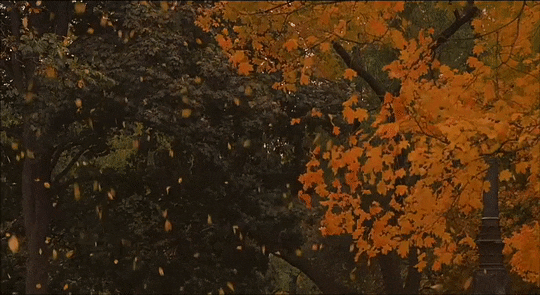
NOVEMBER
REMEMBRANCE FOR SIGRID THE HAUGHTY
9th November
Origins: C9th CE
Observed by: Heathens, Ásatrú, Norse pagans
It is not actually known whether Sigrid Storråda, or Sigrid the Haughty, was an actual historical figure, an amalgamation of a few, or simply a myth. The lore goes that she was proposed to multiple times and turned down many but went on to orchestrate conflict when a potential suitor - Olaf Tryggvason, King of Norway - attempted to convert her to Christianity.
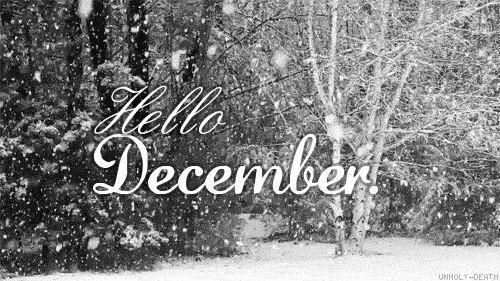
DECEMBER
REMEMBRANCE FOR EGILL SKALLAGRÍMSSON
9th December
Origins: C10th CE
Observed by: Heathens, Ásatrú, Norse pagans
Day celebrating the poet, farmer, and berserker Egill Skallagrímsson, who is recalled in The Icelandic Sagas by Snorri Sturluson. Egill is known for his many killings and escaping death by writing an epic poem after being captured when washing up on our Northumberland coastline.
SATURNALIA
17th - 23rd December
Origins: Ancient Rome
Observed by: Roman polytheists, some Hellenic
Like Yule and Lesser Dionysia, Saturnalia was the Roman winter festival celebrating the coming return of the sun and honouring the god Saturn. The standard feasting and drinking feature, and slaves would be treated as equals like Dionysia. Saturnalia is another festival cited as being picked up by Christians and used as inspiration for Christmas.
WINTER SOLSTICE (YULE/MIDWINTER)
21st December
Origins: Germanic nations, as early as C4th CE
Observed by: Norse pagans, Wiccans, Neopagans, LaVeyan Satanists, Ásatrú, Heathens, many Germanic nonpagan peoples
Yule is the midwinter festival known commonly among pagans as a time for feasting, being with loved ones, remembering ancestors, and looking forward to the return of the light and warmer days. Many pagans will celebrate Yule for more than one day, some celebrating a week either side, some for longer, up to two months, and some for twelve days afterwards. True Yule would have originally been in January for midwinter, but King Haakon the Good
moved it to coincide with the Christian celebrations in the 10th century, as told in the Ynglinga Saga.
On the 24th of December, Anglo Saxons are said to have celebrated 'Mothers Night' honouring female ancestors.
RURAL/LESSER DIONYSIA
End of December/beginning of January
Origins: Ancient Greece
Observed by: Hellenic polytheists
Smaller festival honouring the god Dionysus (Greater Dionysia took place in cities at the end of winter). Feasting, mask wearing to stop distinction between classes so that everyone could feel equal, sacrifices, parades, and phallic display were all used to celebrate.
#wheel of the year#wiccan#pagan#heathen#greek#mythology#holidays#religious holidays#pagan holidays#non-Abrahamic holidays#witch#witchcraft#witchblr#pagan wicca#polytheism#paganism#witches#witch holidays#witches holidays#pagan witch
30 notes
·
View notes
Text
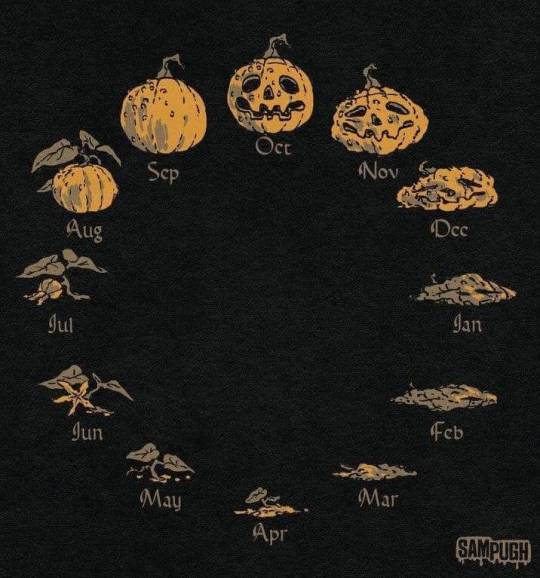
16K notes
·
View notes
Text
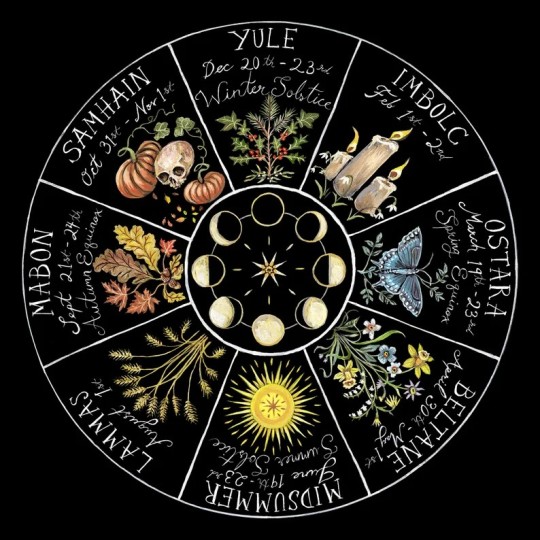
Source
#wheel of the year#etsy#print#yule#imbolc#ostara#beltane#midsommar#midsummer#lammas#mabon#samhain#pagan witch#pagan#paganism#paganblr#witch
5K notes
·
View notes
Text
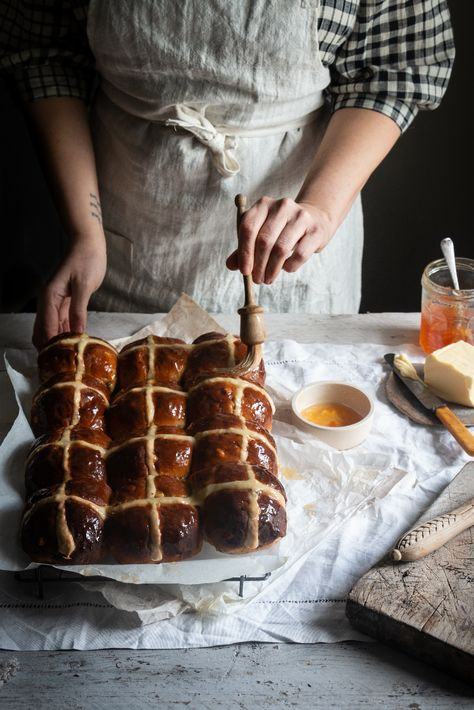
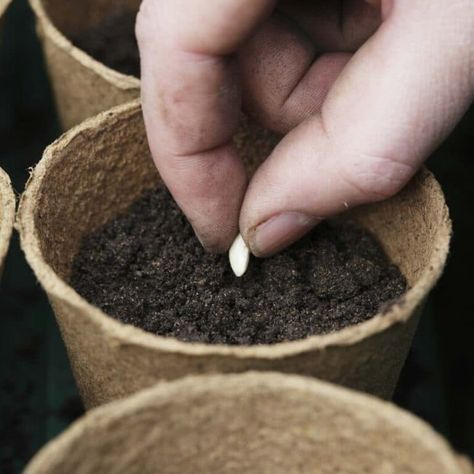


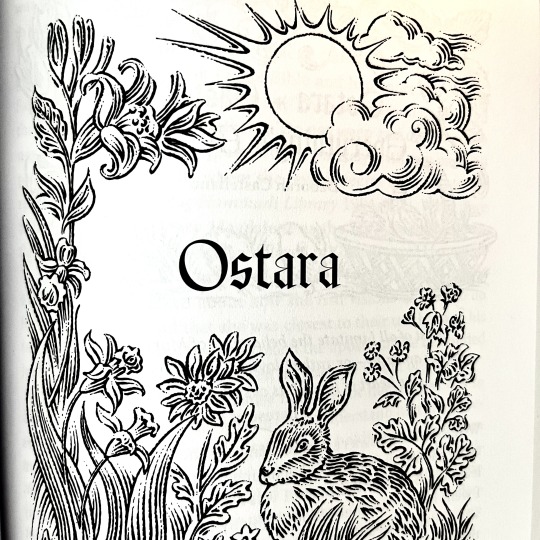

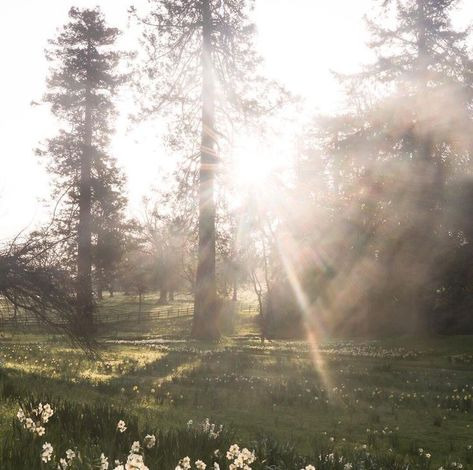

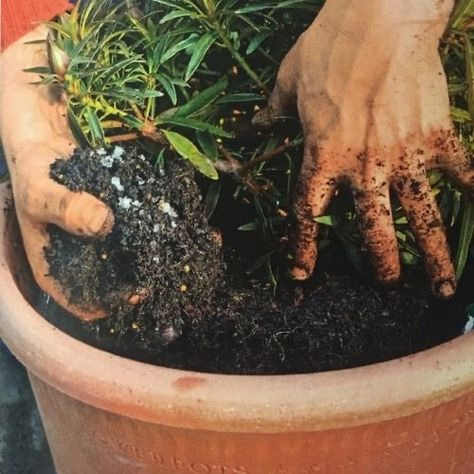
Ostara (March 19-21)
Ostara is this week, with this sabbat we celebrate the beginning of spring and perfect balance between night and day. The winter months are officially over, and from now on everything will bloom and get warmer 🌞
Correspondences for Ostara:
Symbols | Eggs, seeds, flowers, hare
Colors | Pastel colors, green, yellow, pink, white
Spells | Fertility, growth, balance, purification and abundance
Crystals | Amethyst, clear quartz, lapis lazuli, rose quartz, jasper
Herbs and flowers | Lavender, tulips, rose, daffodils, lily’s
Foods | Eggs, breads (hot cross buns), cake, chocolate, seeds, fruits
How to celebrate | Baking, dying or painting eggs, planting seeds (woth intention), nature walks, spring cleaning.
#witchy#witchy things#witchyvibes#witches#witch#whimsigoth#whimsigothic#witchythings#whimsical#witchcraft#witch aesthetic#witch blog#witch community#witch post#witch stuff#witchcore#witchcraft community#witches of tumblr#witchlife#witchy stuff#magick#pagan#ostara#spring#spring equinox#wheel of the year#witchy woman#paganism
2K notes
·
View notes
Text
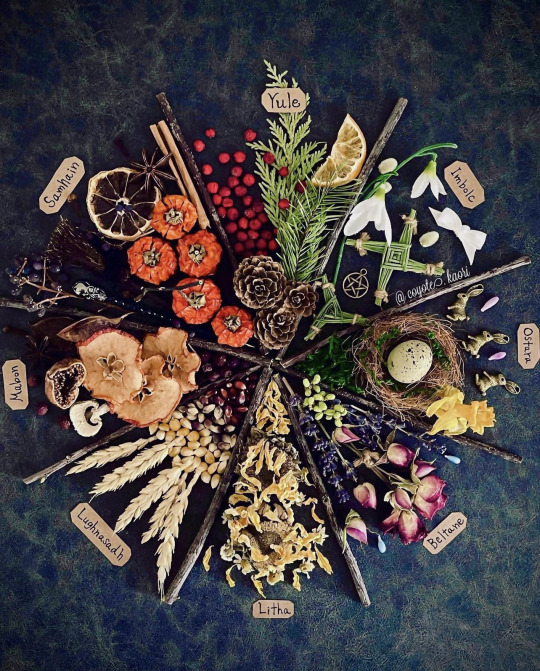
📷 Coyote.kaori
#wheel of the year#Samhain#mabon#imbolc#Ostara#Yule#litha#lammas#lughnassadh#beltaine#witchblr#witches of tumblr#witchcraft#wicca#pagan#witchy things#witchy#magick#green witch#baby witch#kitchen witch#witch altar#wiccan altar
2K notes
·
View notes
Text
Spring Equinox Masterpost- Spoonie Witch Friendly

Art Credit: Anastasia Catris
The Spring Equinox, also called the Vernal Equinox or Ostara, is usually celebrated between the 21st of March in the Northern Hemisphere (In the Southern Hemisphere around September 20th or 21st)
In 2024, Ostara and the Spring Equinox land in the Northern Hemisphere on Monday, March 19th.
The Spring Equinox celebrates the arrival of spring. Celebrating balance, growth, and new beginnings as Winter has finally ended.
Spring Equinox Correspondances
Colours
Light Green
Lavender
Sunny Yellow
Light Blue
Pastel Pink
White
Herbal
Lemongrass
Daffodils
Tulips
Violets
Apple Tree
Cherry Blossom
Primrose
Birch tree
Hyacinths
Dandelion
Garlic
Ash tree
Jasmine
Edibles
Honey
Salad greens
Spring veggies
Fresh berries
Mead
Herbs
Eggs
Seeds
Bread
Edible flowers
Quiches
Custards
Maple
Animals
Hares
Baby Chicks
Snakes
Robins
Bees
Butterflies
Phoenix
Ram
Crystals
Fluorite
Moonstone
Silver
Aquamarine
Clear Quartz
Amazonite
Symbols
Bonfires
Flowers
Rabbits
Eggs
Seeds
Baskets
Flowering or Tree Buds
Lambs
Birds
Spiritual meanings
Purification
Cleansing (removal of stagnant energy)
Growth
Transition
Motivation
Balance
Birth
Good fortune
Kindness
Joy
Fertility
Scents
Coconut
Citrus
Floral scents (rose, lilac, jasmine, etc)
Herbal scents (rosemary, basil, mint, etc)
Gods / Goddesses / Spirits
Eostre – (Anglo-Saxon)
Aphrodite - (Greek)
Gaia - (Celtic)
Gaea - (Greek)
Venus - (Roman)
Athena - (Greek)
Aurora - (Roman)
Eos - (Greek)
Isis – (Egyptian)
Freya - (Norse)
Persephone - (greek)
Cybele - (Roman)
The Green Man - (Celtic)
Odin – (Norse)
Osiris – (Egyptian)
Pan – (Greek)
Thoth – (Egyptian)
Adonis – (Greek)
Apollon – (Greek)
Apollo - (Roman)
Need some suggestions to celebrate? I've got you covered.
High energy celebrations and ritual
Deep cleaning of the hearth and home
Nature hikes
Visiting farmers markets
Making preserves
Create a fae garden
Create a seasonal altar
Abundance/Prosperity ritual
New beginnings ritual
Low energy celebrations
Wear pastels
Create flower crowns
Light a candle with scent correspondence
No spoon celebrations
Opening a window
Journaling Prompts
Keeping hydrated
Drink floral tea
Rest
How you celebrate the holiday does not matter. You can choose to do any activity that feels right. These are only suggestions and remember that you're enough no matter what.
Also please note some stuff is UPG. A great book is Year of the Witch by Temperance Alden for honouring the celebrations and if you wanted to work more seasonally. It's not Wiccan-based and has plenty of resources for every witch.
Feel free to post how you celebrate in the comments or reblogs!
Want to see more of my posts? Check out my Wheel of the Year Masterpost or my Main Masterpost.
#witchcraft#witch#electic witch#witchblr#paganism#spoonie witch#spoonie magic#ostara#wheel of the year#witchy#spring equinox#seasonal magic#ostara masterpost#ostara correspondences#spring equinox masterpost#spring equinox correspondances#spoonie#chronic illness magic#chronic illness
943 notes
·
View notes
Text
Ostara, The Beginning of Spring:
Deities:
Brigid
Celtic
Goddess of fire, the home, and the end of Winter.
Her holiday is technically Imbolc, but I felt the need to add her because she is, in fact, a spring goddess
Ēostre/Ostara
Anglo-saxon/Germanic
Goddess of Spring
This is her holiday, as it was named after her. There are myths about her spanning from Germany to England.
Persephone
Greek
Goddess of Spring and the Queen of the Underworld.
Her celebration of the return to the overworld is April 3rd.
Flora
Roman
Goddess of flowers and the season of Spring
Jarylo
Slavic
God of vegetation, fertility, and springtime
He is called many different things depending on the country he is being spoken about in.
Eiar
Old Greek
Hora of Spring
A hora is the goddess of a season.
Crystals of Spring:
Emerald
Known for its calming nature, bright green color, and the rest it takes to get an emerald shiny.
May’s birthstone and a gemstone associated with Mercury.
Aquamarine
A stone of rebirth, peace, and wisdom
March’s birthstone and a gemstone associated with Saturn
Moss Agate
A stone known for its connection with Earth, confidence, and creativity.
Moss agate is a stone of the Moon and of Earth.
Green Aventurine
A stone of wellness, prosperity, and abundance.
Associated with Venus
Golden Apatite
A self help stone that boosts creativity, confidence, and manifestation.
This stone is associated with Mercury
Herbs of Spring:
Chervil
Chives
Dill
Lemongrass
Lime leaf
Mint
Marjoram
Oregano
Parsley
Rosemary
Tarragon
Thyme
#ostara#spring#witchcraft#witch#witchblr#witches#baby witch#spring equinox#wheel of the year#green witch
463 notes
·
View notes
Text
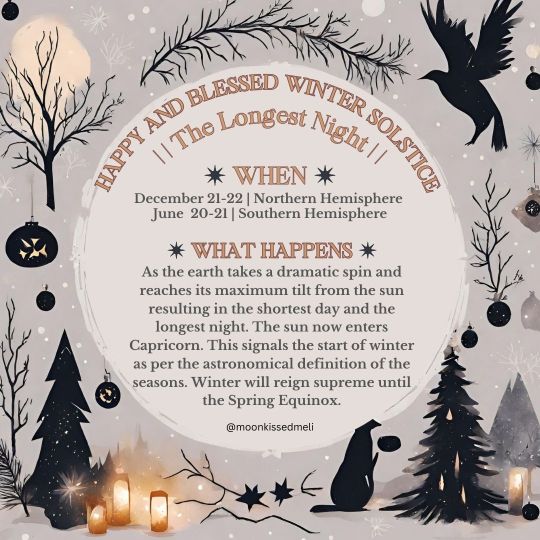
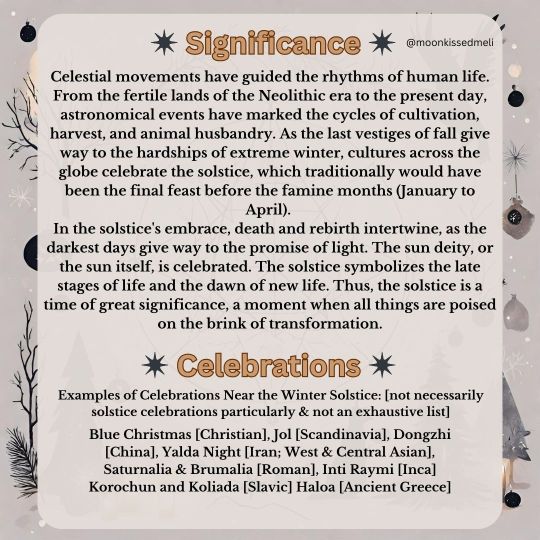
Please enjoy my digital grimoire snippet about Winter Solstice!
#pagan#witch#witchblr#winter solstice#yule#blue christmas#witchcraft#wheel of the year#paganblr#solstice#winter#grimoire#digital grimoire#haola#demeter#posideon
865 notes
·
View notes
Text



the weather gets colder and the days get shorter . . !
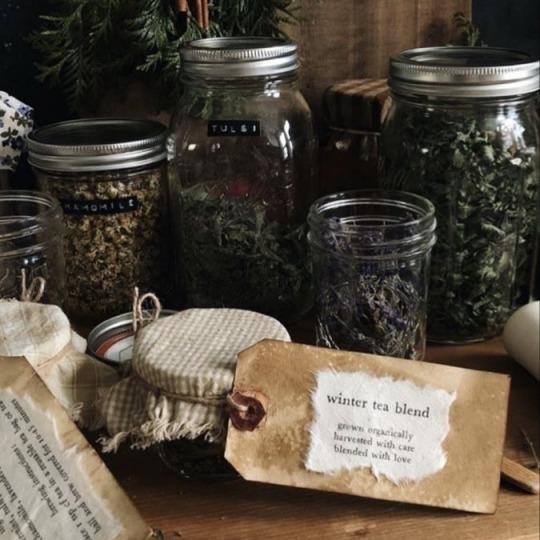
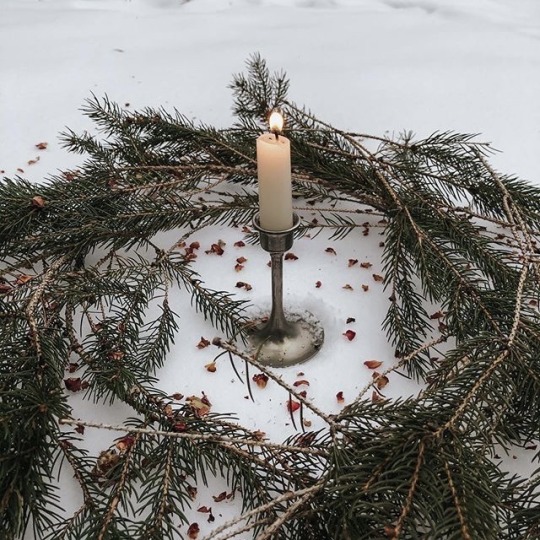

#posts#witchcraft#paganism#yule#witchblr#pagan holidays#winter solstice#wheel of the year#pagan witch#moodboard
939 notes
·
View notes
Text
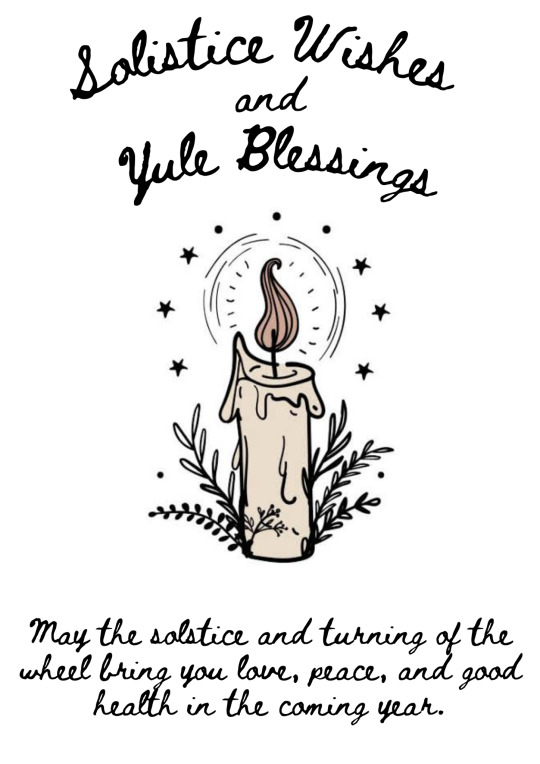
Yule blessings and Happy Winter Solstice everyone ❤️
#Yule#winter solstice#wheel of the year#Yule Wishes#WinterSolsticewishes#baby witch#witches of tumblr#witches#samhain#Litha
3K notes
·
View notes
Text
October 2023 witch guide
Full moon: October 28th
New moon: October 14th
Sabbats: Samhain
October Hunter's Moon
Known as: Blood moon, drying rice moon, falling leaf moon, freezing moon, migrating moon, moon of the changing seasons, shedding moon, ten colds moon, winterfelleth & windermanoth
Element: Air
Zodiac: Libra & Scorpio
Nature spirits: Frost faeries & Plant faeries
Deities: Apollo, Astarte, Belili, Cernunnos, Demeter, Hathor, Herne, Horned God, Ishtar, Kore, Lakshmi & Mercury
Animals: Elephant, jackal, ram, scorpion & stag
Birds: Crow, heron & robin
Trees: Acacia, apple, cypress & yew
Herbs/Plants: Angelica, apple blossom, burdock, catnip, pennyroyal, sweet Annie, thyme & Uva ursi
Flowers: Calendula, cosmos & marigold
Scents: Apple blossom, cherry & strawberry
Stones: Amethyst, beryl, obsidian, opal, tourmaline & turquoise
Colors: Black, dark blue, Dark greens & purples
Energy: Artistic works, balance, creativity, harmony, inner cleansing, justice, karma, legal matters, mental stimulation, partnerships, reincarnation & uncovering mysteries or secrets
It is believed that this name originates from the fact that it was a signal for hunters to prepare for the upcoming cold winter by going hunting. This is because animals were beginning to fatten up in preparation for the winter season. Moreover, since fields had recently been cleared out under the Harvest Moon, hunters could easily spot deer and other animals that had come out to search for remaining scraps. Additionally, foxes and wolves would also come out to prey on these animals.
The earliest use of the term “Hunter’s Moon,” cited in the Oxford English Dictionary, is from 1710. Some sources suggest that other names for the Hunter’s Moon are the Sanguine or Blood Moon, either associated with the blood from hunting or the color of the changing autumn leaves.
Samhain
Also known as: All Hallow's Eve, Ancestor Night, Feast of Apples, Feast of Sam-fuim, Feast of Souls, Feast of the Dead, Geimhreadh, Hallowmass, Martinmass, Old Hallowmas, Pagan New Year, Samana, Samhuinn, Samonios, Shadowfest & Third Harvest
Season: Fall
Symbols: Apples, bats, besom(brooms), black cats, cauldrons, ghosts, gourds, jack-o-lanterns, pumpkins, scarecrows & witches
Colors: Black, gold, orange, silver & white
Oils/incense: Basil, cloves, copal, frankincense, gum mastic, heather, heliotrope, mint, myrrh & nutmeg
Animals: Bat, boar, cat cattle & dogs
Stones: Amber, anatase, black calcite, black obsidian, black tourmaline, brass, carnelian, clear quartz diamond, garnet, gold, granite, hematite, iron, jet, marble, pearl, pyrite, ruby, sandstone, sardonyx, smokey quartz, steel & tektite
Foods: Apples, ale, beef, cider, corm, fruits, garlic, gourds, grains, hazelnuts, herbal teas, mushroom, nettle, nuts, pears, pomegranates, pork, poultry, pumpkin pie, sunflower seeds, thistle, turnips & wine (mulled)
Herbs/plants: Acorn, Allspice, catnip, corn, dittany of Crete, hazel, mandrake, mugwort, mullien, oak leaves, pine, rosemary, sage, straw, tarragon, thistle, wormwood & yellow cedar
Flowers: Calendula, chrysanthemum, deadly nightshade, rue & fumitory
Goddesses: Al-lat, Baba Yaga, Badb, Banba, Bast, Bebhionn, Bronach, Brunhilde, Cailleach, Carlin, Cassandra, Cerridwen, Copper Woman, Crobh Dearg, Devanyani, Dolya, Edda, Elli, Eris, Erishkigal, Fortuna, Frau Holde, Hecate, Hel, Ishtar, Kali, Macha Mania, Morrigan, Nemesis, Nephthys, Nicneven & Rhiannon
Gods: Arawan, Baron Samede, Belenus, Coyote, Cronus, Dagda, Dis, Hades, Loki, Nefertum, Odin, Osiris, Pluto, Woden & Xocatl
Issues Intentions & Powers: Crossroads, darkness, death, divination, honoring ancestors, introspection, the otherworld/underworld, release, visions & wisdom (of the crone)
Spellwork: Divination, fire magick, night magick, shape-shifting, spirit calling & water magick
Related festivals:
• Day of the Dead- (Spanish: Día de Muertos or Día de los Muertos) is a holiday traditionally celebrated on November 1st and 2nd, though other days, such as October 31 or November 6, may be included depending on the locality. It is widely observed in Mexico, where it largely developed & is also observed in other places, especially by people of Mexican heritage. Although related to the simultaneous Christian remembrances for Hallowtide, it has a much less solemn tone and is portrayed as a holiday of joyful celebration rather than mourning. The multi-day holiday involves family and friends gathering to pay respects and to remember friends and family members who have died. These celebrations can take a humorous tone, as celebrants remember funny events and anecdotes about the departed.
• All Saints Day- is a Christian solemnity celebrated in honor of all the saints & martyrs of the Church, whether they are known or unknown
Activities:
• Dedicate an altar to loved ones who have passed
• Boil a simmer pot to cleanse your space
• Have a silent dinner
• Light a candle for your loved ones & yourself
• Decorate your house and/or altar
• Release negative energy & cleanse your with a ritual bath
• Pull tarot cards to see what may be in store for you ahead
• Cleanse, clean & de-clutter your space
• Leave offerings to the Fae
• Journal & reflect on your accomplishments, challenges & everything you did this year
•Go on a nature walk
• Learn a new form of divination
• Have a bonfire with your friends and/or family
• Carve pumpkins
• Express yourself creatively through art, music, ect
• Visit a cemetery & help clean off areas that need it or to visit a family member/ ancestor & leave an offering
• Hold a seance
• Bake spooky treats & bread as offerings
• Refresh your protection magicks, sigils & rituals
Samhain is a Gaelic festival on 1 November marking the end of the harvest season and beginning of winter or "darker half" of the year. Celebrations begin on the evening of 31 October, since the Celtic day began and ended at sunset.
This fire festival is celebrated on October 31st & is considered the Pagan New Year. It is the first Sabbat on the Wheel of the Year, a cross-quarter festival & the third (final) harvest festival of the mundane year. This is the time when the veil between the worlds of the living & those who have passed is the thinnest, which allows greater communication between the two
Some believe this is the time of the Goddess's mourning of the death of the God until his rebirth at Yule. The Goddess's sadness can be seen in the shortening, darkening days & the arrival of cold weather
Sources:
Farmersalmanac .com
Llewellyn's 2023 magical almanac: practical magic for everyday living
Wikipedia
Llewellyn's Complete Book of Correspondences by Sandra Kines
A Witch's Book of Correspondences by Viktorija Briggs
#witchcraft#wheel of the year#sabbat#samhain#fall#hunter's moon#witchblr#wiccablr#paganblr#pagan#wicca#grimoire#spellbook#book of shadows#witches of tumblr#witch tumblr#witch community#moon magic#witch tips#witch guide#beginner witch#traditional witchcraft#all witches#correspondence#witchcore#GreenWitchcrafts#baby witch#beginner witch tips#baby witch tips#witchyvibes
843 notes
·
View notes
Text

Natural Easter Egg dyes...
#Ostara#Easter#Natural Easter Egg Dyes#natural dyes#colour my world#tis the season#wheel of the year#easter#easter eggs
261 notes
·
View notes
Photo

Hello witches!
I bring you the 2023 calendar for the remaining months ☆゚. * ・ 。゚
How are you holding up mid-mercury retrograde?
This year I just added the Planet Oppositions because there are a few of them in the later months of the year and I wanted to research them.
This is a Northern Hemisphere calendar and specific dates may vary due to different time zones, so always do your research for your specific region.
And if you find any mistakes or anything do add it if you reblog, so I can keep it in mind for future calendars!
See you in the full moon!!
#witches calendar#moon#witch#witchcraft#wheel of the year#pagan#new moon#full moon#zodiac signs#sun#witchystuff#beltane#samhain#calendar 2023#2020#planets#potion#spell
1K notes
·
View notes
Text

#witches of tumblr#witchy#witch#witchcore#witchcraft#pagan#paganism#occult#dark#babacore#witchblr#pentagram#wicca#aesthetic#witch aesthetic#ostara#spring equinox#wheel of the year
216 notes
·
View notes
Text

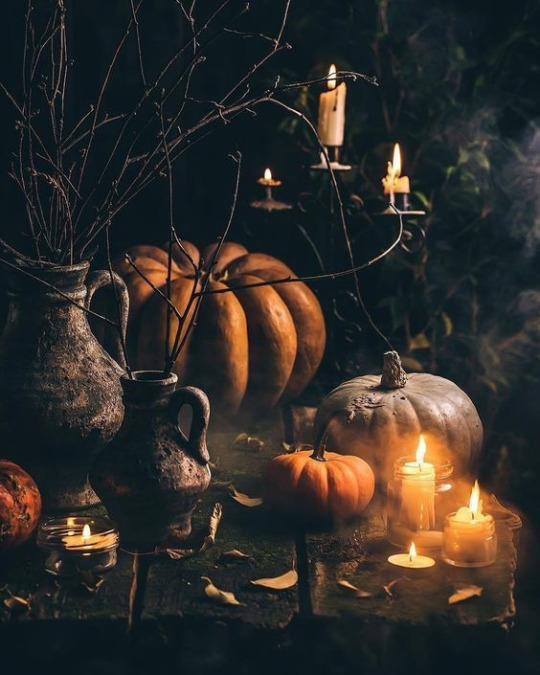


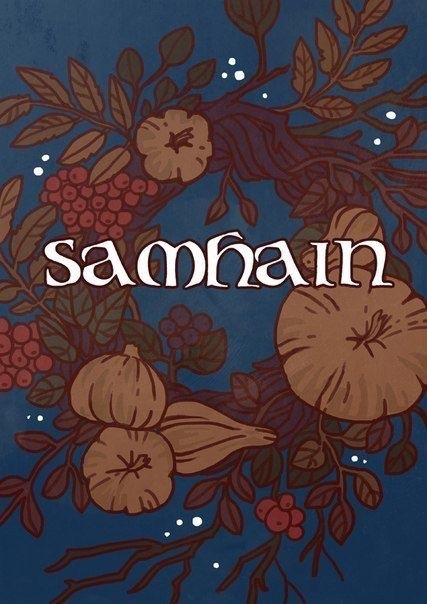



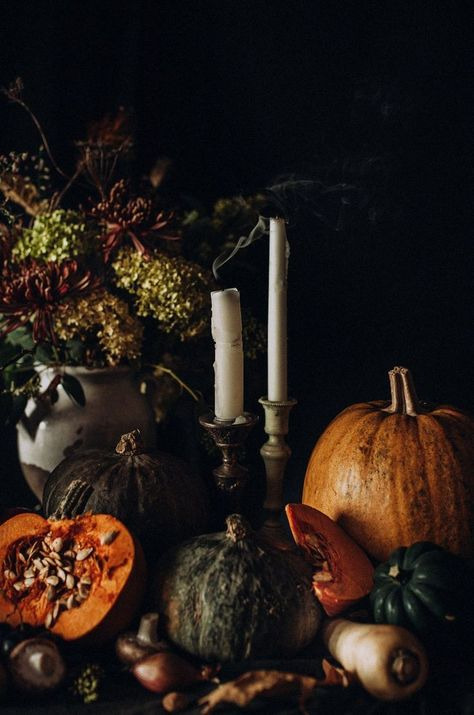
Samhain (Oct 31 - Nov 1)
Also known as witches new year, marks the end of the harvest season and the beginning of winter, the nights are long and it is getting colder.
The harvest is celebrated and we express our gratitude. Samhain is also a celebration to honor ancestors and contact the deceased, as the veil is thin and makes communication easier.
Correspondences for Samhain:
Symbols of Samhain | pumpkins, bats, spiders, cobwebs, witches, broomsticks, skeletons.
Colors | Black, orange, white, silver, purple.
Spells | Gratitude, releasing, honoring, abundance, communication, protection.
Crystals | Amethyst, onyx, obsidian, smokey quartz.
Herbs and flowers | Cinnamon, Nutmeg, Rosemary, Sandalwood.
Food | Apple pie, pears, pumpkins, nuts, grains, bread, vegetables, soups, stews, candy, ciders.
Activities | Honoring ancestors, letting go, celebrating, baking, visiting cemetery, trick or treating, watching horror movies, dumb supper, séances.
#witchy#witchy things#witchyvibes#witches#witch#whimsigoth#whimsigothic#witchythings#moon#whimsical#witchcraft#witch aesthetic#witch community#witchcraft community#witches of tumblr#magick#pagan#wheel of the year#moodboard#green witch#green witchcraft#harvest#harvest season#harvest festival#mabon#autumn#autumn equinox#samhain#halloween#all hallows eve
2K notes
·
View notes
Photo

Blessed Mabon by IrenHorrors
This artist on Instagram
#art#illustration#digital art#fall#autumn#deer#witch#pagan#paganism#wheel of the year#mabon#autumn equinox#trees#forest
4K notes
·
View notes